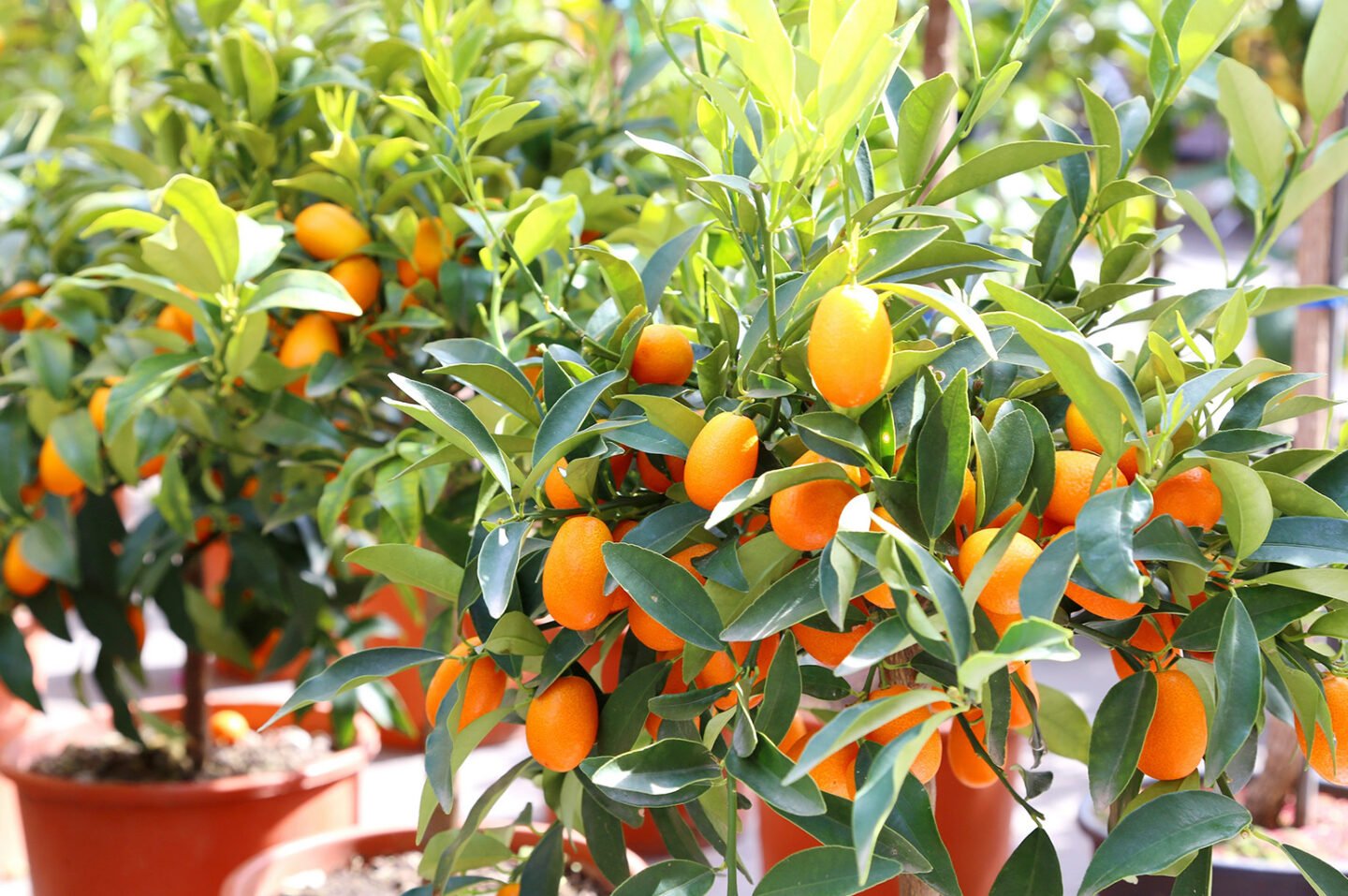Kumquat (Fortunella japonica, syn. Citrus japonica) is a small citrus fruit that grows in climates that are too cold for other citrus plants. The fruit is sweet and sour at the same time and is eaten without removing the skin.
Growing kumquats is simple and easy. They need full sun and can tolerate any soil pH and most soil types, as long as the soil is well drained. They can also tolerate coastal conditions.
If you are interested in kumquat cultivation – you must collect as much information as possible about this interesting tree, and we have provided it for you in the following text!

How to Plant a Kumquat Tree
Kumquat seeds need to be stratified for a minimum of 2 weeks. Planting kumquat from seeds is done on a sandy substrate, with the obligatory maintenance of moderate humidity. The seeds should be sown at a depth of 0.5-1 cm. The temperature during sowing should be at least 20 °C. Choose a lighted location.
Depending on the conditions, the germination time is from 7 days to 2 months, and even more. The substrate for further cultivation of kumquat should be loamy-humus soil. In the summer, you can take the plant outside, on the terrace – and the further cultivation of kumquat on the terrace means that you must provide it with enough light and water. It likes the sun, while in the colder part of the year it needs to ensure a temperature of up to 10 C. Then it is also necessary to water and fertilize the kumquat more carefully.
Maintenance of a Kumquat Tree
Whether it is about growing kumquats on the terrace or in the garden, maintenance of kumquats means that the soil around the young trees should be kept moist but not soaked. Once the tree is established, water it during a drought. For proper Kumquat tree care, you should be transplanting it every 2 years. Withhold fertilizer for the first two or three months. After that, use a fertilizer designed for fruit (every 7 weeks). Use a layer of mulch in the root zone to help the soil retain moisture and prevent the growth of weeds that depend on the tree for moisture and nutrients.
Kumquat trees do not require pruning except to remove shoots that grow from the base, which use up your drive’s resources. If you want to prune the tree to its proper shape and bring it indoors for the winter, wait until after the fruit is harvested but before the flowers bloom in the spring.
Kumquat Propagation
It is recommended to propagate by grafting onto a Poncirus trifoliata substrate – a plant with which kumquat is compatible. The plant will be more resistant to winter and diseases.
Kumquat for cultivation will not be the best if it is propagated by seed, since it grows poorly on its own roots, is more prone to diseases, and cannot withstand such low temperatures.
Watering
Proper watering is of utmost importance for the growth of any citrus plant. Keep the soil constantly moist but not wet. Try sticking your finger in the ground. If you feel that the soil is sticking to your fingers because it is wet, wait a while before watering. If the soil is dry, water the kumquat well until the water flows through the hole.
Picking
Kumquat is ripe when the skin on the fruit turns dark orange and the fruit is soft to the touch.
Cut off the fruit with scissors or a knife, so as not to damage the plant by pulling the fruit. Cut the fruit with a small piece of branch and a few leaves – this will be a great decoration.
You May Not Know This
Kumquats alleviate problems with the urinary bladder, menopause, all kinds of allergies and eczema on the skin, acne, calluses, and scars. It also reduces fat deposits. It is used for bronchitis, type 2 diabetes, conjunctivitis, and stomach problems. It protects the immune system and fights against sclerosis, arthritis, and many other diseases and ailments.
Kumquat protects the digestive system from parasites and creates a protective film in the stomach and intestines. In this way, it reduces the harmful effects of pathogenic microorganisms, such as persistent bacteria such as Escherichia coli, but also against fungi and other parasites.

In Conclusion
A healthy kumquat that has good growing conditions and proper maintenance will reward you with dozens of fruits in late summer and fall. Wait for the skin to become a brighter, darker color and for the fruit to be softer to the touch. When you harvest the kumquat fruit, it will stay fresh for a while. You can eat it raw or make jams and jellies.
